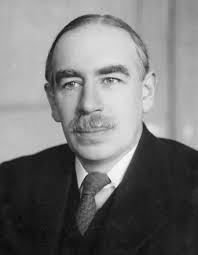Keynes, John Maynard

Bio: (1883–1946) British economist. John Maynard Keynes studied, and later spend the whole of his academic career at King’s College, Cambridge, Keynes was the owner and chairman of the Board of the weekly journal, the Nation and Athenaeum, and was the editor of the Economic Journal from 1911 to 1945.
The post-World War I economic woes in Britain, with high inflation and heavy unemployment, influenced Keynes to write two theoretical books A Tract on Monetary Reform (1923) and A Treatise on Money (1930), which studied causes, consequences and possible solutions for monetary instability. He advocated, with the Liberal Party to adopt extensive social policies. The consequences of the Great Depression of 1929–1932, prompted Keynes to rethink his economic approach, and at the end of the long process of writing he published The General Theory of Employment, Interest and Money (1936). This book made Keynes the most influential economist of the twentieth century and introduced a new branch of economics - macroeconomics. The book subverted the classical economics assumption that a competitive market economy is self-equilibrating, and that it always produces full employment. Keynes introduced the concept of ‘underemployment equilibrium’ that required monetary manipulation by the central bank and extensive ‘socialization’ of investment to maintain full employment.
Keynes argued that government intervention was necessary in times of economic crisis to stimulate demand and prevent economic collapse. He believed that in a recession, individuals and businesses would cut back on spending, leading to a decrease in demand and a further decrease in economic activity. To combat this, Keynes advocated for government spending on public works, social programs, and other initiatives to boost demand and stimulate the economy.
One of the key concepts of Keynesian economics is the idea of the multiplier effect. This refers to the idea that an increase in government spending or investment leads to a larger increase in overall economic activity as money is repeatedly spent and re-spent in the economy. This, in turn, leads to an increase in employment and income, which further stimulates demand and contributes to economic growth.
Another key aspect of Keynesian economics is the idea of the trade-off between inflation and unemployment. According to Keynesian theory, if the economy is operating at full employment, increasing government spending to stimulate demand will lead to inflation. On the other hand, if the economy is in a recession, increasing government spending can help to reduce unemployment without causing inflation.
Theoretical approaches
Keynesian EconomicsMain works
The Economic Consequences of the Peace (1919);
A Treatise on Probability (1921);
Revision of the Treaty (1922);
A Tract on Monetary Reform (1923);
The End of Laissez-Faire (1926);
A Treatise on Money (1930),
The General Theory of Employment, Interest and Money (1936).

